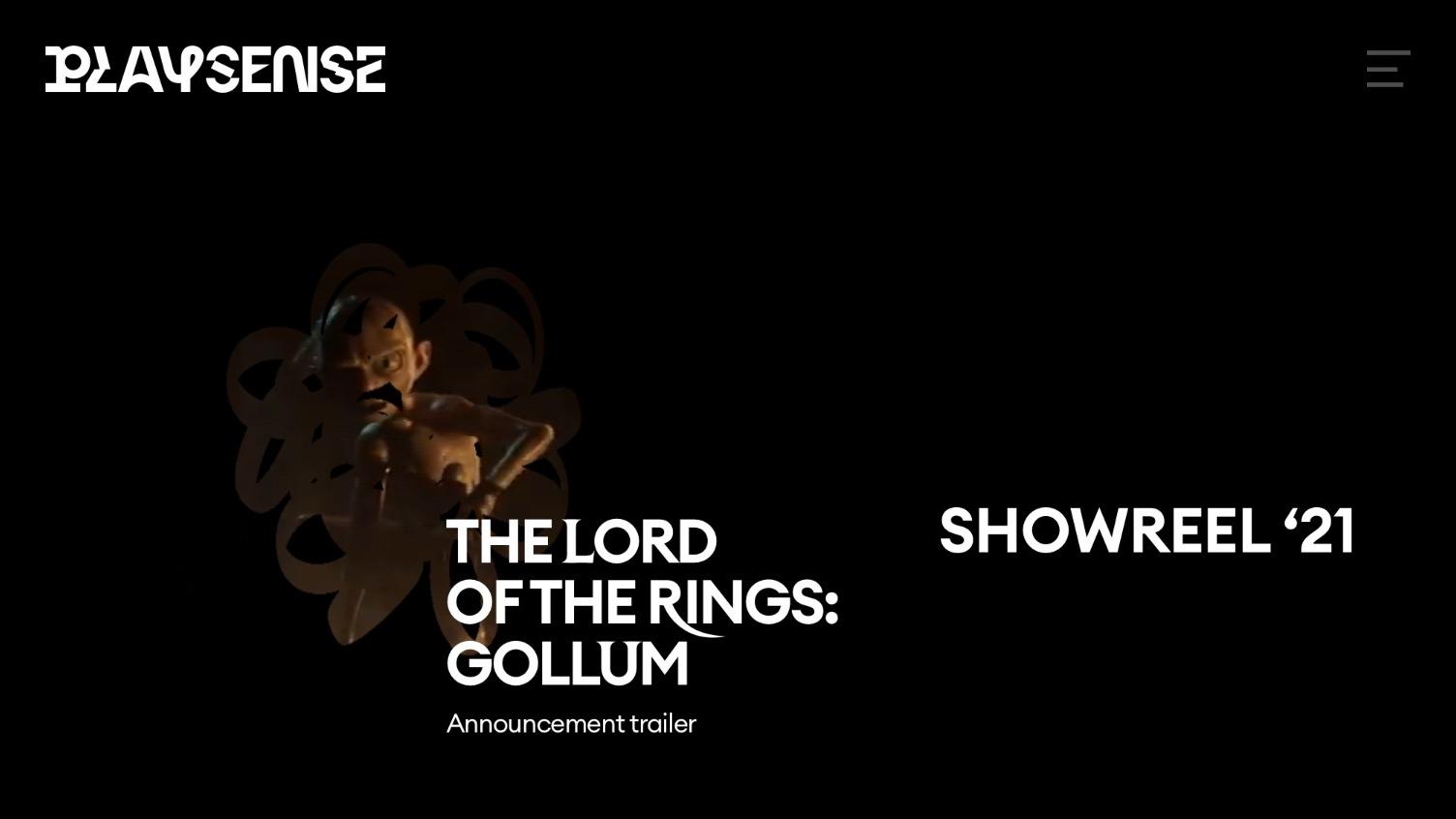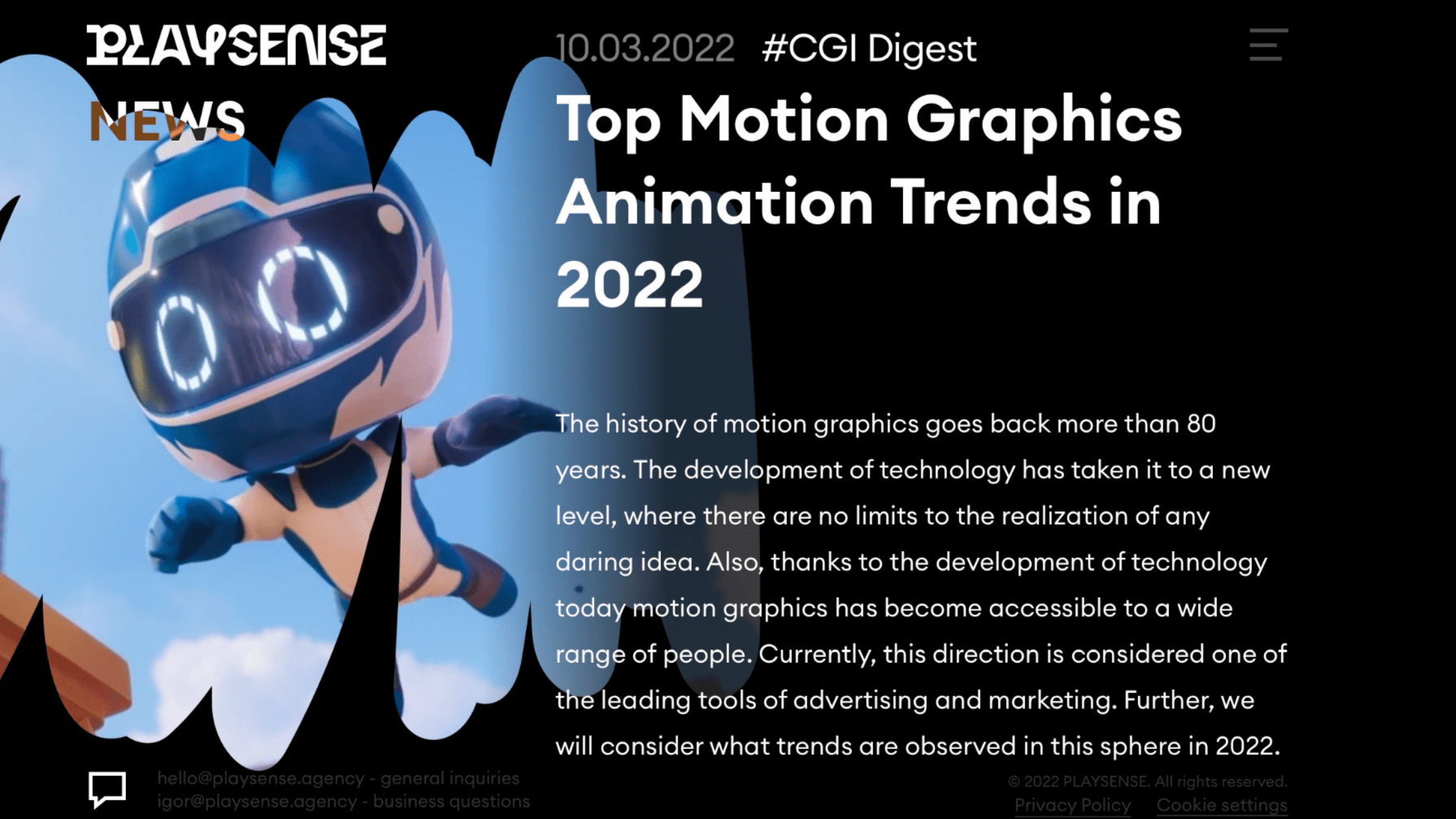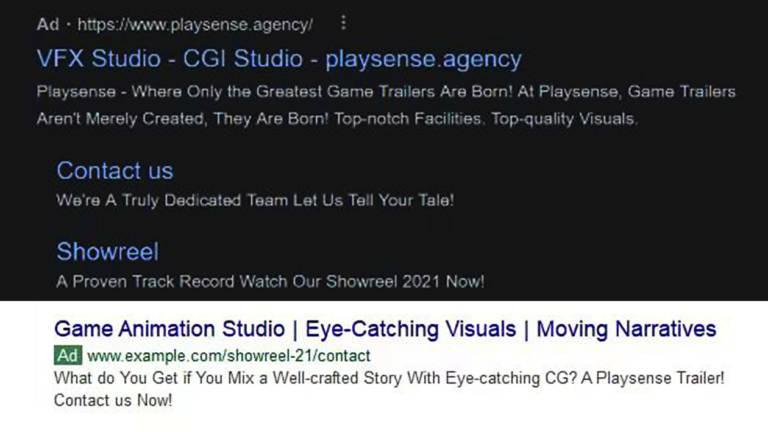Our client PLAYSENSE AGENCY is an international visual effects and computer graphics agency that specializes in creating game trailers (Cinematic Trailers) for the foreign market. The company works with world-class names – World of Tanks, The Lord of the Rings, etc., and makes a considerable contribution to the development of the game industry.
Difficulties of the project
Since the target audience of the client can include not only large companies but also indie developers, we needed to weed out students and novice programmers, far from an easy task. The copious amounts of visual content on the website attracted an incredibly diverse audience, so the advertising campaigns had to describe the services with pinpoint accuracy.
The company chose not a local but an international market (USA, Europe, Canada, South America, SEA) for promotion.
A website audit revealed a notable absence of key queries in TOP Google which had to be corrected. The site itself also required some improvements – lack of structure, service pages and a multitude of technical mistakes.
Goals
The main goal set by the client was to increase the number of leads. Technically, we divided it into three areas:
- Obtaining leads by increasing organic traffic from Google search engines in the U.S. and Europe.
- Obtaining leads from paid traffic from advertising campaigns.
- Obtaining leads from social networks, increasing coverage and subscriber growth.
Tools: SEO, contextual advertising in Google Ads, targeting ads on Facebook and Instagram
Period: December 2021 – March 2022
Solution
Each part of the task at hand was allocated to a different department: SEO promotion, contextual advertising, and targeting.

SEO optimization
First and foremost, we assembled a semantic core. This allowed us to build the site’s structure and develop a complete list of services. For those who have not worked in this category before, this part may seem complicated because of the highly specialized terminology – CGI, VFX, CG, Motion, Cinematic and Animation. There were also a lot of informational requests, which are of interest to developers, not potential clients. It was vital for us to gather as much quality commerce as possible, so when it came time to tackle the project the team fully immersed themselves into the sphere of game advertising creation.
Next we set about optimizing the site. A large amount of video content hampered the work on the site considerably, for which we developed several TORs to increase the page loading speed by image compression, replacement of video by GIF, etc. and at the same time we eliminated various technical mistakes. Thanks to our team’s efforts, the site’s animation runs much faster, providing a significantly improved experience for visitors to the site today.
The next step is to attract organic traffic to the site by placing content on the topics of frequent requests. Here, the quality of leads is directly proportional to the quality of traffic. Do you want your articles to rank with your competitors and attract targeted leads? Forgo the usual copywriters and leave the writing to subject matter experts. That’s what we did.

To develop a strategy for external promotion we decided not to take an extremely innovative strategy. By thoroughly analyzing the customer’s competitors, we found that purchasing links through content publication works perfectly. Next, we made a list of reputable sites for publishing materials:
- Expert articles,
- PR materials
- Cases of the client and proceeded with the placement.
Contextual Advertising in Google Ads
First off, we analyzed the current campaigns in Google Ads, evaluated their effectiveness and decided to disable some of them. The existing ads were optimized: the services were described clearly, UTP was added.

Key queries for Animation, Cinematic, CG, VFX, etc. were cleaned up.
It was important to cover both high-frequency queries and low-frequency ones that were targeted at the client. We checked the keywords for which we received irrelevant traffic and added them to the minus words.
We launched advertising campaigns on geo: USA, Europe, Canada and “World” (Asia, South America etc.). The priority was given to Europe and Asia, because the sphere of advanced gaming advertising is less developed in these territories, compared to the media giants in the USA and Canada, so the competition is lower.

We made adjustments to the rates – we monitored the efficiency of spending the budget by keywords.
Changing the strategy from automatic to manual bid management in order to maintain the volume of conversions helped reduce the cost per click. Also, the “World” geo had the lowest CPC, which impacted the total cost per click.
The results were immediate: the bulk of high-quality leads, which have the potential to grow into a fully-fledged project, originated from this strategy.
Targeting in YouTube
We started building up the target audience on the YouTube channel. Here again we started with semantics: all metadata – titles, descriptions and tags were created according to the core we had collected.
For the shows, we chose videos with cases and Showreel, and launched in the selected geo: USA, Europe and “World”. The budget was limited, so we used A/B testing to identify the most effective GEO.
Targeted advertising on Facebook and Instagram
We chose re-targeting as our first tactic, deciding to work with a warm audience that already knew the client and had visited the site. To correctly track applications, we set up a pixel on the site to the contact page. This allowed us to run separate ad campaigns in the U.S. and major European cities for outreach and leads.

For the conversion campaigns we used ready-made cases from the client’s site, where the task, ways of solving it and the result were described. The outreach ads spun posts from social networks and some creatives from posts, and were aimed primarily at increasing the number of subscribers.
Next, we moved on to setting up targeting, dividing it into 3 segments:
- Targeting by interest to the game industry, video special effects.
- Targeting by position – marketing directors, CEOs, LPRs.
- LAL (look-alike) on e-mail from CRM.
For the content in the first few months, we used the posts from the feed, but we were soon faced with audience burnout. To combat this, we then launched the hidden posts (the creatives that the client developed). They contained a different message; the visuals were more focused on the characters from the cases, which helped us to attract the audience’s attention in a new way.
In this segment, the focus was on building an audience; experience shows that significantly fewer leads are obtained from social networks than from contextual advertising.
Result
Within a few months of cooperation we managed to achieve the following indicators:
1. SEO – an increase in organic traffic from Google by 41%.

Organic Search
Key queries were carefully selected and Title and Description were optimized, it was possible to increase clickability and as a consequence to raise the average CTR to 2.4%.

CTR
2. PPC advertising: we have received more than 95 thousand impressions during our work. What is interesting, the best CTR of 4 campaigns in geo was in the World (Asia, South America, etc.) – up to 10.19%. The conversion rate was 7.4%.

Paid Search
3. YouTube. During the month we have received more than 53.56 thousand impressions on YouTube, VTR was 52.6%.
4. Targeted advertising – we have received more than 2.3 million impressions from all social networks, more than 12.5 thousand clicks and have increased the amount of subscribers by 60%.

With the help of contextual and targeting ads we managed to attract quality leads to the website as well as increase the number of users from Google search.
